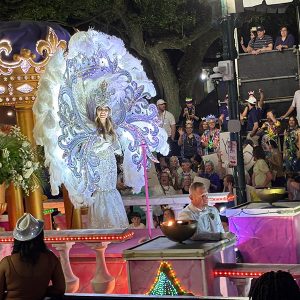Mount Olympus
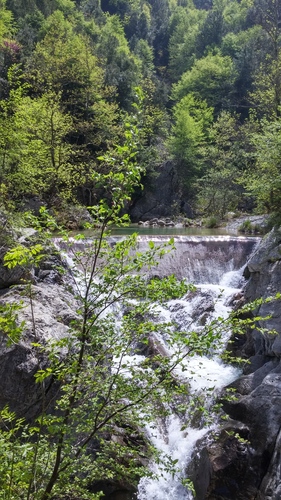 We visited Mount Olympus recently, during our own epic first Greek odyssey. Travelling to it from our base in nearby Thessaloniki, just under an hour’s bus ride south of the city, this mythical and magical mountain is home to the Twelve Olympian gods – the Pantheon – of Greek mythology.
We visited Mount Olympus recently, during our own epic first Greek odyssey. Travelling to it from our base in nearby Thessaloniki, just under an hour’s bus ride south of the city, this mythical and magical mountain is home to the Twelve Olympian gods – the Pantheon – of Greek mythology.
At 2,918 metres, it is Greece’s highest point and dominates the landscape of neighbouring Thessaly and Macedonia. In reality, there are more than 50 separate peaks, with Mytikas the absolute summit and reputed meeting place of the 12 gods, with Zeus – the god of gods – standing above them all.
Declared Greece’s first National Park in 1938, Olympus is rich in flora and fauna, thriving on its lush forests. Above the thick green belt, its white peaks – snow-covered for most of the year – pull constant focus, both physically and spiritually.
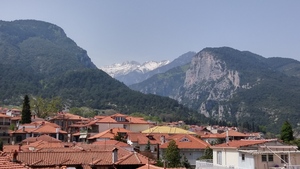 We were based in the charming heart-shaped, red-roofed, cobble-streeted town of Litochoro, the main gateway to Olympus. From here, Silver Travellers can enjoy an easy, gradually climbing walk into the foothills, on a solid paved path, slicing through a deep gorge, way above fast-tumbling water until reaching a mesmerising waterfall. You will also see some of the 1,700 recorded Olympian plant species along the way, and plenty of butterflies joined us, in bright spring sunshine, on this perfect introductory 30-45 minute stroll.
We were based in the charming heart-shaped, red-roofed, cobble-streeted town of Litochoro, the main gateway to Olympus. From here, Silver Travellers can enjoy an easy, gradually climbing walk into the foothills, on a solid paved path, slicing through a deep gorge, way above fast-tumbling water until reaching a mesmerising waterfall. You will also see some of the 1,700 recorded Olympian plant species along the way, and plenty of butterflies joined us, in bright spring sunshine, on this perfect introductory 30-45 minute stroll.
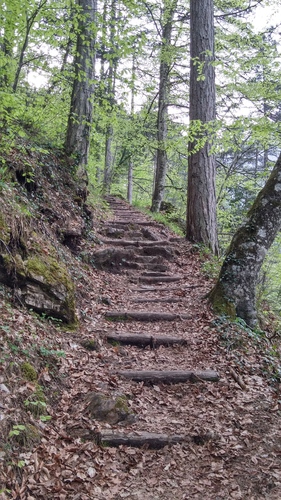 We love mountains. I climbed Kilimanjaro for my 50th birthday and, looking up towards Mytikas, I’m not sure I can resist the temptation to scale Olympus for my 60th, in 2017. Or risk the thunderous wrath of Zeus if I don’t. For more adventurous Silver Travellers, it can be attacked from Litochoro (293 metres) in 2-3 days, staying 1 or 2 nights in comfortable, well-equipped refuges on the mountain, most of which are open from May to October.
We love mountains. I climbed Kilimanjaro for my 50th birthday and, looking up towards Mytikas, I’m not sure I can resist the temptation to scale Olympus for my 60th, in 2017. Or risk the thunderous wrath of Zeus if I don’t. For more adventurous Silver Travellers, it can be attacked from Litochoro (293 metres) in 2-3 days, staying 1 or 2 nights in comfortable, well-equipped refuges on the mountain, most of which are open from May to October.
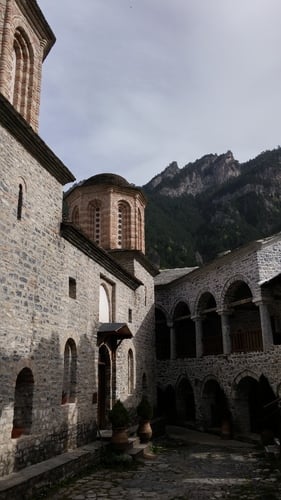 Or an easier option is to start the climb from Prionia, at 1,100 metres the furthest you can drive up on the southern side of the mountain. And having already met, laughed and shared a drink with the larger-than-life owner of the restaurant and bar there – Dimitri – I can think of no better motivation tool than the thought of slurping a hearty bean stew and guzzling an ice cold beer with him on the way down, after looking Zeus in the eye.
Or an easier option is to start the climb from Prionia, at 1,100 metres the furthest you can drive up on the southern side of the mountain. And having already met, laughed and shared a drink with the larger-than-life owner of the restaurant and bar there – Dimitri – I can think of no better motivation tool than the thought of slurping a hearty bean stew and guzzling an ice cold beer with him on the way down, after looking Zeus in the eye.
Also in the foothills of Olympus is the peaceful sanctity of Agios (Saint) Dionysios Monastery. But it was only built in this location – 3 km from Litochoro – after the original monastery of 1542, further up the mountain, was destroyed by German bombers in 1943. The original monastery is being painstakingly restored, and is currently occupied by a lone monk. 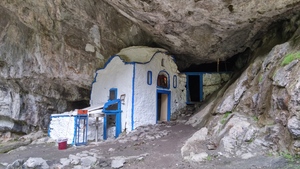 From here it’s a wonderful 30 minute walk along the stream and under the green canopy of the forest to the Holy Cave of Dionysios, where he and other hermit monks have lived in even more splendid isolation.
From here it’s a wonderful 30 minute walk along the stream and under the green canopy of the forest to the Holy Cave of Dionysios, where he and other hermit monks have lived in even more splendid isolation.
But there’s much more to see and do in this alluring central part of Greece than just to be transfixed by Mount Olympus and its foothills. Whether your interests are history, religion, food – or just lazing on a glorious beach – read on.
Dion
Just a 20 minute drive from Litochoro, and lying in the shadow of Mount Olympus, is Dion. This was a sacred place and cultural cradle for the ancient Macedonian civilisation from as early as 600 BC, and from where they worshipped Zeus and his daughters, the Muses. In the 4th century BC, Alexander the Great offered sacrifices here before setting out for war against Persia. Later, from 169 BC until the 4th and 5th centuries AD, the Romans occupied and enlarged this extraordinary city.
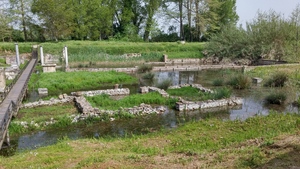 Now both a fascinating archaeological site and a serene wildlife reserve, the sprawling open-air site is a must-see. Stroll amongst the living evidence of several ancient civilisations, including Greek temples, a Hellenistic theatre, sanctuaries to Demeter, Zeus, Isis and Asklepios, public baths extending over a huge 4,000 square metre area – those Romans needed a lot of cleansing – and well-preserved mosaics, frescoes and sculptures. All at the same time as being serenaded by birds, wildlife…and a plethora of very noisy frogs.
Now both a fascinating archaeological site and a serene wildlife reserve, the sprawling open-air site is a must-see. Stroll amongst the living evidence of several ancient civilisations, including Greek temples, a Hellenistic theatre, sanctuaries to Demeter, Zeus, Isis and Asklepios, public baths extending over a huge 4,000 square metre area – those Romans needed a lot of cleansing – and well-preserved mosaics, frescoes and sculptures. All at the same time as being serenaded by birds, wildlife…and a plethora of very noisy frogs.
Expert guide Katerina Rizou will interpret all the layers of history for you. Painstaking excavation first started in 1928 and continues today, with new treasures still being uncovered by Katerina and other archaeologists.
Platamonas
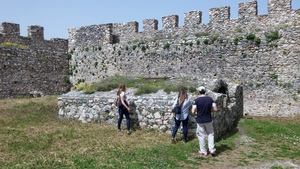 Half an hour south of Dion is the Castle of Platamonas, a Crusader fortress built in the early 13th century, on the site of an earlier Byzantine castle. Occupying a strategically important location, on the border of Macedonia and Thessaly, it’s an imposing vision perched high on a hill, overlooking the coast and the modern road linking northern and southern Greece. The subject of many battles from the 13th to 15th centuries, it was also occupied more recently by New Zealand troops in 1941, until the castle was bombarded by the Germans.
Half an hour south of Dion is the Castle of Platamonas, a Crusader fortress built in the early 13th century, on the site of an earlier Byzantine castle. Occupying a strategically important location, on the border of Macedonia and Thessaly, it’s an imposing vision perched high on a hill, overlooking the coast and the modern road linking northern and southern Greece. The subject of many battles from the 13th to 15th centuries, it was also occupied more recently by New Zealand troops in 1941, until the castle was bombarded by the Germans.
Palaios Panteleimonas
For a less violent environment, head a few kilometres into the hills from the castle, to the traditional mountain village of Palaios Panteleimonas. The road winds through forests of oak, chestnut and arbutus, offering scintillating views back down towards the castle, the coastline of southern Pieria and the Thermaikos Gulf, and up towards the divine mountain.
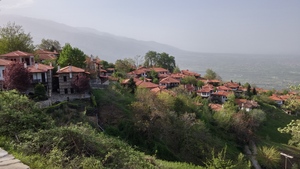 Pedestrianisation helps to preserve the unspoiled, timeless feel of this remarkable, traditional Macedonian community. Stroll along its cobbled, terraced streets; explore the artisan shops, providing natural products from the area; stare at the beautifully restored stone and timber houses, tumbling down the natural contours of the foothills; marvel at the beauty of its Greek Orthodox church, seemingly more appropriate for a large city than a tiny mountain village; and rest awhile at one of the many tavernas and bars strewn around the labyrinthine streets.
Pedestrianisation helps to preserve the unspoiled, timeless feel of this remarkable, traditional Macedonian community. Stroll along its cobbled, terraced streets; explore the artisan shops, providing natural products from the area; stare at the beautifully restored stone and timber houses, tumbling down the natural contours of the foothills; marvel at the beauty of its Greek Orthodox church, seemingly more appropriate for a large city than a tiny mountain village; and rest awhile at one of the many tavernas and bars strewn around the labyrinthine streets.
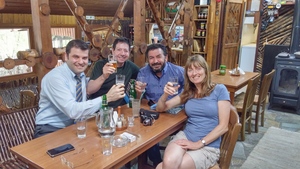 None of this would have been possible without the quite remarkable guidance and friendship of our host in the Mount Olympus area, Giorgos – call me George – Papamichail, manager of the Olympus Mediterranean Hotel in Litochoro. It is a charming boutique 4* hotel, tucked away in the atmospheric back streets of the old town. The memory of waking up to the sound of church bells and swallows, looking up to the snowy peak of Mount Olympus and down to the Aegean Sea under cloudless Greek skies will help to sustain us through the long, grey English summer. Or perhaps not. Efharistó, Giórgos.
None of this would have been possible without the quite remarkable guidance and friendship of our host in the Mount Olympus area, Giorgos – call me George – Papamichail, manager of the Olympus Mediterranean Hotel in Litochoro. It is a charming boutique 4* hotel, tucked away in the atmospheric back streets of the old town. The memory of waking up to the sound of church bells and swallows, looking up to the snowy peak of Mount Olympus and down to the Aegean Sea under cloudless Greek skies will help to sustain us through the long, grey English summer. Or perhaps not. Efharistó, Giórgos.
Pieria
The Litochoro hotel is one of four owned in this part of Greece by the Mediterranean Group. And if it’s relaxation you want after all that mountain-climbing, ouzo-guzzling and sightseeing, head for the beach and one of their three other hotels, on the Olympus Riviera of Pieria. We visited the flagship 5* Mediterranean Village resort with George, at Paralia Katerini, just 30 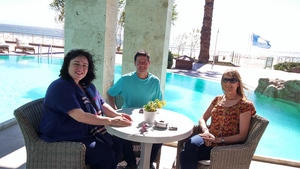 km north of Litochoro and heading back towards Thessaloniki. We met owner Evangelia Xyptera-Lamprou for a drink here, and were already mentally checking in for a stay.
km north of Litochoro and heading back towards Thessaloniki. We met owner Evangelia Xyptera-Lamprou for a drink here, and were already mentally checking in for a stay.
What more appropriate reward for climbing the mountain of the gods could there be than to mingle with Bacchus and indulge in Hedonism, whilst swimming in the Aegean Sea and spoiling yourself with very 21st century amenities?
Mount Olympus and the surrounding area have much to offer the Silver Traveller, whether active or more leisurely, and is a highly recommended excursion from nearby Thessaloniki.



